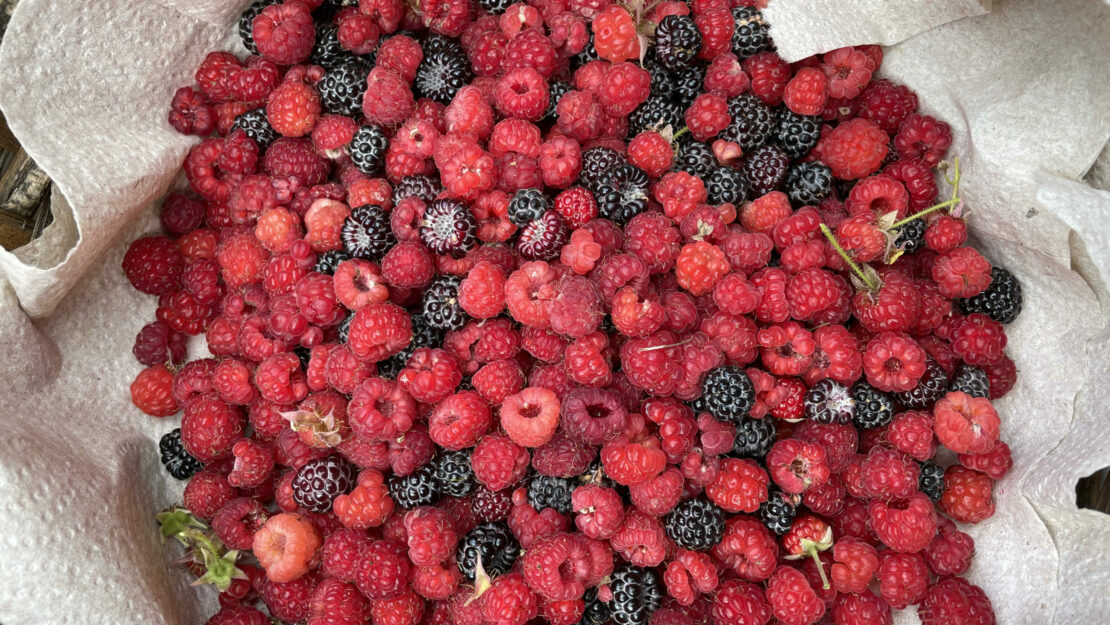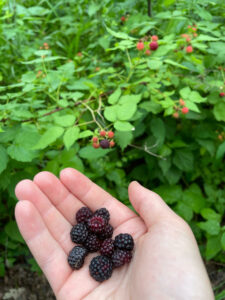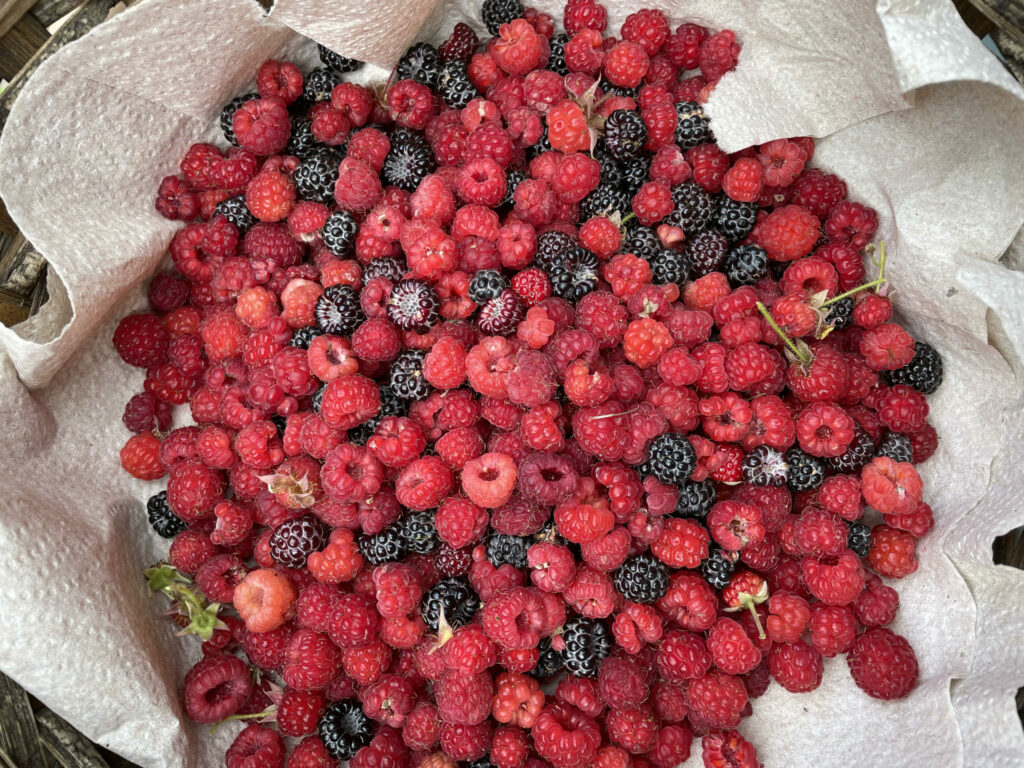Wild Abundance

By Kaden Mettel, Communications Outreach Specialist Individual Placement / AmeriCorps Member placed at Osprey Wilds Environmental Learning Center
As someone who works in agriculture, it is easy for me to get stuck seeing food as only what grows in the beds I work in. Cultivated food makes up a majority of my diet, and it is how most of America is fed. However, many of the plants that grow around us that we consider “wild” or “weeds” are actually edible.
One morning, while I was weeding a particularly overgrown garden bed, I realized that the plant I had been pulling up over and over again was actually the wild and edible Lamb’s Quarters. This “weed” was growing heartily between the onions I had planted a few weeks earlier. Once I recognized the plant, I began to see it growing everywhere interspersed with our cultivated produce. Lamb’s Quarters is full of nutrients and can be cooked similarly to spinach (which happened to be growing in the next bed over), so why was I uprooting one plant while watering and tending to the other? I laid a few of the pulled Lamb’s Quarters aside to bring home and cook with later. After this small revelation, I began to notice the abundance of edible food around me, both cultivated and wild.
 Of foragable foods, one of my favorites are the wild berries that grow throughout the summer. When I stumble across the first ripe raspberry of the season I know that summer has begun! Many of us are familiar with the bright pop of wild raspberries, but Minnesota is also home to wild black raspberries, thimbleberries, lowbush blueberries, and so many more. These berries often grow in thick brambles or bushes and produce a fruit that is smaller and (in my opinion) more flavorful than their cultivated counterparts found in grocery stores. There is a black raspberry bramble near Trapp Farm that I would visit often earlier in the season. Just a few minutes of picking would yield handfuls of juicy berries that I would bring home to share with my roommates. Nobody planted these bushes, but they grow and bear fruit for birds, squirrels, foxes, and the occasional lucky human.
Of foragable foods, one of my favorites are the wild berries that grow throughout the summer. When I stumble across the first ripe raspberry of the season I know that summer has begun! Many of us are familiar with the bright pop of wild raspberries, but Minnesota is also home to wild black raspberries, thimbleberries, lowbush blueberries, and so many more. These berries often grow in thick brambles or bushes and produce a fruit that is smaller and (in my opinion) more flavorful than their cultivated counterparts found in grocery stores. There is a black raspberry bramble near Trapp Farm that I would visit often earlier in the season. Just a few minutes of picking would yield handfuls of juicy berries that I would bring home to share with my roommates. Nobody planted these bushes, but they grow and bear fruit for birds, squirrels, foxes, and the occasional lucky human.
This growing season I am trying to look up from the garden beds beneath my hands and into wild spaces for healthy food. The natural world has much to offer those who only need to notice its abundance.
